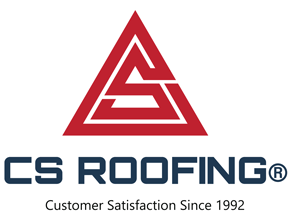Exploring Roofing Options: Cost, Durability, and Popular Choices
Choosing the right roof for your home is an important decision. It not only affects the aesthetics of your property but also provides protection from the elements. With various roofing options available in the market, it can be overwhelming to determine which one suits your needs best. In this blog, we will delve into different aspects of roofing, including cost, durability, installation, and popularity, to help you make an informed decision.
What type of Roof is more expensive?
When it comes to roofing, the cost can vary significantly depending on the material used. Some materials, such as slate and copper, are considered high-end and tend to be more expensive. These materials are known for their durability and unique aesthetic appeal, which justifies their higher price tag. On the other hand, asphalt shingles are generally more affordable, making them a popular choice for budget-conscious homeowners.
What type of roof lasts longer?
If longevity is a crucial factor for you, then investing in a roof with a longer lifespan is essential. Among the various options available, metal roofs are renowned for their durability. They can last up to 50 years or more with proper maintenance. Slate roofs are also known for their exceptional longevity, often lasting for a century or more. While these materials may be pricier, their extended lifespan can make them a worthwhile investment in the long run.
What is the cheapest new roof option?
For those on a tight budget, finding affordable roofing options is paramount. Asphalt shingles are widely regarded as the cheapest new roof option. They are cost-effective, easy to install, and available in a variety of styles and colors. Despite their affordability, asphalt shingles offer decent durability, typically lasting around 20 to 30 years. This makes them a popular choice for homeowners seeking a balance between cost and longevity.
What color roof lasts the longest?
The color of your roof plays a significant role in its longevity and energy efficiency. Light-colored roofs, such as white or light gray, tend to reflect more sunlight, reducing heat absorption and prolonging the lifespan of the roofing material. Dark-colored roofs, like black or dark brown, absorb more heat and may experience faster degradation. However, it’s worth noting that the color alone doesn’t solely determine a roof’s lifespan, as material quality and maintenance also factor into its durability.
What is the strongest style of the roof?
When it comes to strength, few roofing styles can match the resilience of a metal roof. Metal roofs offer excellent resistance against extreme weather conditions, including high winds, heavy rain, and hail. Their interlocking panels provide exceptional structural integrity, making them highly durable. Additionally, metal roofs are fire-resistant, adding an extra layer of protection to your home. Due to their strength and durability, metal roofs are often recommended for areas prone to severe weather.
What is the easiest roofing to install?
For homeowners who prefer a do-it-yourself approach or want to minimize installation costs, asphalt shingles are typically the easiest roofing material to install. They come in pre-cut shingle strips that are relatively simple to align and fasten to the roof structure. Furthermore, asphalt shingles are lightweight compared to other materials, making them easier to handle during the installation process. However, it’s important to note that if you lack experience or expertise, it’s best to hire a professional roofer to ensure a proper and secure installation.
What is the life expectancy of a roof?
The life expectancy of a roof largely depends on the type of material used. Asphalt shingles, the most common roofing material, typically last between 20 and 30 years. Metal roofs can last 50 years or more, while slate roofs have an exceptional lifespan of 100 years or more. Factors such as climate, maintenance, and the quality of installation also impact the life expectancy of a roof. For example, roofs in regions with harsh weather conditions, such as extreme heat, heavy snowfall, or high winds, may experience accelerated wear and tear, leading to a shorter lifespan.
Regular maintenance is essential for maximizing the longevity of any roof. This includes inspecting for damage, cleaning gutters, removing debris, and addressing any issues promptly. By keeping up with routine maintenance, you can identify and fix minor problems before they escalate into major repairs or roof replacements.
The quality of installation is another crucial factor in determining a roof’s life expectancy. Hiring a reputable and experienced roofing contractor is vital to ensure proper installation techniques and adherence to industry standards. Improper installation can lead to premature roof failure, compromising its durability and lifespan.
What is the most popular roof?
The popularity of roofing styles varies depending on factors such as regional preferences, architectural styles, and personal preferences. However, asphalt shingles are generally considered the most popular roofing material in many regions. They offer a balance of affordability, durability, and a wide range of style options. Asphalt shingles come in various colors and textures, allowing homeowners to customize the look of their roofs to match their desired aesthetic.
Additionally, metal roofs have been gaining popularity in recent years due to their durability, energy efficiency, and sleek appearance. Metal roofs are now available in a variety of styles that mimic the look of traditional materials such as slate, tile, or wood shakes, providing homeowners with more design choices.
What are the three main types of roofs?
The three main types of roofs are:
- Gable Roof: This is one of the most common roof types, characterized by its triangular shape. It consists of two sloping sides that meet at a ridge, forming a gable at each end. Gable roofs are relatively simple in design, cost-effective, and provide good ventilation. However, they may be more susceptible to wind damage in areas prone to high winds.
- Hip Roof: Hip roofs have slopes on all four sides, meeting at a ridge. These roofs are more stable and resistant to high winds compared to gable roofs. Hip roofs also offer good drainage and can provide additional living space in the form of attic rooms or vaulted ceilings.
- Flat Roof: As the name suggests, flat roofs have little to no slope. They are commonly found in commercial buildings but can also be used in residential properties. Flat roofs require proper waterproofing and drainage systems to prevent water pooling, and they may need more frequent maintenance compared to sloped roofs. They also offer the possibility of creating rooftop gardens or outdoor living spaces.
Conclusion
Choosing the right roof involves considering various factors such as cost, durability, installation ease, and popularity. While some materials may be more expensive upfront, they can offer longer lifespans and better resistance to harsh weather conditions. Asphalt shingles are a popular and affordable option, while metal roofs provide exceptional durability. The color and maintenance of the roof also influence its lifespan. By understanding the different types of roofs and their characteristics, you can make an informed decision that suits your budget, aesthetic preferences, and long-term needs.
Tags:



